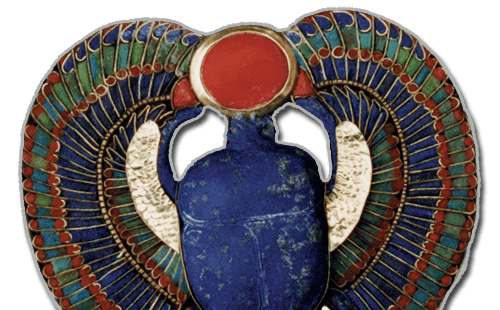Will the Real Tutankhamun Finally Make Himself Known?
Staff at the Tutankhamun Exhibition showing in Dorchester are eagerly awaiting the results of a momentous test carried out on the mummy of Tutankhamun. The results to be announced at a press conference in Cairo on Wednesday 17th February may change our knowledge of this world famous pharaoh by revealing who Tutankhamun really was. Ever since Tutankhamun was discovered in his tomb in 1922 by the British archaeologist Howard Carter debate has raged as to the real identity of Tutankhamun. In recent years the advance of DNA profiling has given hope that Tut's family connections could possibly be revealed.
Tim Batty, general manager of the Tutankhamun Exhibition in Dorchester, said today: "After over ten years of repeated requests by international scientists and subsequent refusals by the Egyptian authorities to run DNA analyses on Tutankhamun's mummy, the world, may, just may, discover who this legendary pharaoh really is. In addition to genetic information as to Tut's family connections it is possible for the DNA tests to reveal other information such as diseases and inherited problems that may have afflicted Tutankhamun. There is so much additional information about the young pharaoh we may soon know."
On Wednesday the 17th February at a press conference to be attended by Farouk Hosni the Egyptian Minister of Culture and Dr Zahi Hawass, head of Egypt's Supreme Council of Antiquities the results of DNA tests on Tut's mummy will be announced. The tests have been carried out on behalf of the Egyptian Mummy Project headed by Hawass, by a team of Egyptian scientists from the National Research Centre, Cairo University's Faculty of Medicine and two German DNA specialists.
The Egyptian Mummy Project had previously carried out a CT scan to try to find out how Tutankhamun had died; now they hope to reveal his parentage.
The results of the DNA tests are hoped by many to settle exactly how Tutankhamun fits into the picture of the Egyptian 18th Dynasty family tree.
The Tutankhamun Exhibition's Tim Batty said "We have been preparing to present the results of the DNA tests in a special display at the exhibition in Dorchester as soon as they are announced. It will be really exciting news but there is always a chance that the tests will prove inconclusive"
The fact that the tests have been carried out at all is a welcome U-turn by Dr Zahi Hawass who has in the past treated the idea of DNA testing with scepticism. Hawass is reported as saying "From what I understand, it is not always accurate and it cannot always be done with complete success when dealing with mummies. Until we know for sure that it is accurate, we will not use it in our research"
In December 2000 a team from Cairo's Ein Shams University and Waseda University in Japan were given permission to take tissue samples. However the Egyptian Government withdrew permission at the last moment. The Supreme Council of Antiquities turned down the tests on the grounds that it was unlikely to produce results and it could damage the already fragile mummy. Hawass is on record as saying that DNA analysis would not lead to anything and therefore the tests were out of the question.
In 2003, Professor Scott Woodward, a microbiologist from Brigham Young University (USA), who had previously carried out DNA tests on a group of 27 royal mummies at the Cairo Museum (only 12 of which produced successful DNA sequences), was asked to carry out the DNA tests but then again the Egyptian Government rescinded on the grounds of "national security".
So seven years later Hawass has changed his mind. Can the DNA tests really help in establishing Tut's parentage? Well yes and no. It depends on a number of factors.
Firstly a number of very important and interesting mummies that could play a vital role in Tutankhamun's family tree have yet to be identified. Although possible DNA relationships maybe established with known but anonymous mummies the really important ones are yet to be identified by conventional archaeological means. Any identification would be by "reverse engineering" and therefore circumstantial.
Secondly the chances of establishing a successful DNA sequence for the mummy are not good. Professor Woodward who carried out tests on 27 royal mummies was only able to establish 12 successful sequences.
The condition and treatment of the body during mummification may have a bearing on successful DNA tests and it is known that Tutankhamun's mummy is not in the best of condition. DNA is fragile easily decomposes, breaking the strands of DNA into fragments, which can result in false sequencing. Another possible problem is that excessive handling may have contaminated Tutankhamun's mummy since it was discovered by Howard Carter in the Valley of the Kings. This could lead to cross contamination. Just a single modern cell could contaminate the analysis making any test void.
The results of the DNA tests will be on display at The Tutankhamun Exhibition in Dorchester from Thursday, 18th February.
Published: 15th Jan




.jpg?w=1960&h=496&zc=1)
.jpg?w=351&h=144&zc=1)
.jpg?w=351&h=144&zc=1)
.jpg?w=351&h=144&zc=1)


